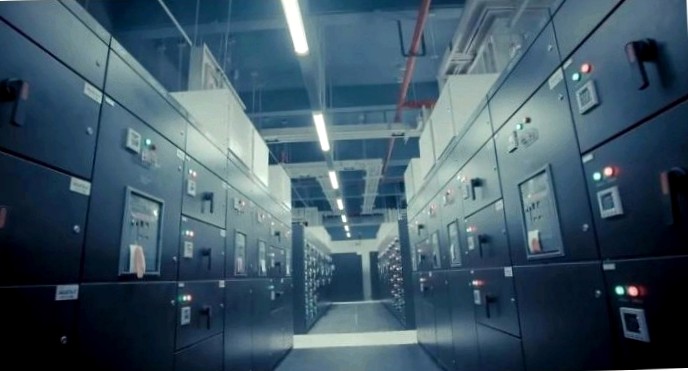Please think about the environment before you send an e-mail

Image: akela999/pixabay.Com
Data center energy demand on the rise, with over 90 percent of data generated reportedly unused
The internet is "one of the biggest problems" in CO2 emissions, said activists from friday for future. "Without active policy design, the digital transformation will further accelerate resource and energy consumption as well as damage to the environment and climate", warned the "the german advisory council on global change (WBGU)" (WGBU).
At first it seemed that resources would be better conserved if bits were moved instead of atoms. E-commerce and telecommuting were seen as ways to reduce energy consumption. And there was also the gross misconception that digital data was immaterial anyway, so somehow not of this dirty world, which in recent years has been associated with the notion of the cloud further suggested, behind which the energy-hungry and very material server farms are hidden. They already account for 2 percent of global energy consumption, and according to estimates, this could rise to 8 to 10 percent or more in the future.
The paradox is that in data centers the processing and storage of data consumes less than half of the electricity, the rest goes into cooling and ensuring continuous power supply by connecting to various lines and generators. How many data centers there are in the world, and how much energy they consume, is a matter of treasure. Perhaps 200 billion kilowatt hours (kwh) or up to 500 billion kwh. It is said that data centers have already emitted as many CO2 emissions as the global airline industry.
Digital gauze
In any case, it is clear that as digitization increases, data centers will grow and become more complex, and their energy consumption will increase despite savings and more efficient technology. Increasingly large amounts of data are being transmitted, for example through streaming of high-resolution videos, push services, cloud services, video telephony, blockchain or use of social networks (online porn or pollution of the atmosphere).
Add to that artificial intelligence, the internet of things, industry 4.0 and soon the autonomous vehicles. And almost half of the people are not even online yet. International data corp estimated in 2018 that there were 33 zettabytes (1 zettabyte is 1 trillion gigabytes) of data in the world in 2018, which could increase fivefold to 175 zettabytes by 2025. 2.5 quintillions (1 quintillion is 1030) of data were produced worldwide every day.
According to an analysis by the borderstep institute, germany has a "clearly" increasing energy demand: "we could calculate", says project manager dr. Alexandra pehlken, "that the more than 50.14 billion in germany in 2018. Kwh of electricity consumed. That’s 2.7% of the electricity consumed in germany and almost 40% more than in 2010." by 2030, energy consumption could increase by more than 50 percent. Not to mention the energy and resources consumed in manufacturing and transporting the equipment and building the buildings.
Antonio neri, CEO of hewlett packard enterprise, said at the world economic forum that actually only 6% of the data that is produced is actually used. So there’s a grotesque abundance economy when 94 percent of the data produced ends up on the "data garbage patch" land. Neri, who explained that today 10 percent of energy consumption was already consumed by data centers, suggests that the digital garbage of unused data should be recycled to some extent to make something out of it "good" out of it.
Google, like other corporations, wants to use only renewable energy in the future. This is how google plans to power the world’s largest data center in henderson, las vegas, with 350 MW of solar power and 280 MW of battery storage. Gemini solar farm to cover nearly 30 square kilometers plans to produce 690 MW and have 380 MW of storage with lithium-ion batteries.
This also shows that renewable energies not only overgrow land, but also contribute to a significant consumption of resources, with the materials then also ending up back on the mull and having to be disposed of. In january, microsoft made available to its cloud customers a sustainability calculator that can be used to calculate the CO2 emissions caused by the use of its cloud services.
Overflowing emails
It also shows that after processing, data storage consumes the most CO2 emissions. If it is true that 94 percent of the data produced is not used at all, then a lot of energy is spent keeping these data graveyards alive. Even if data is only stored, it consumes energy. And even if you delete emails or other data, they don’t really disappear, but copies remain on the servers, often for many years, and eat up electricity.
How many CO2 emissions an email produces is difficult to determine. We do not know. According to mike berners-lee, a normal email should cause about 0.3 g of CO2 emissions, which is equivalent to 0.0000003 tons. With attachments this could also grow to 50 g on average. The british company OVO energy says that the british alone, if you were to send one less unnecessary mail a day, this could be 16 million.433 tons of CO2 emissions per year.
The british were sent 64 million such unnecessary mails a day. This corresponds to over 81.000 flights to madrid. However, courtly behavior that preserves social ties is called abundant here.